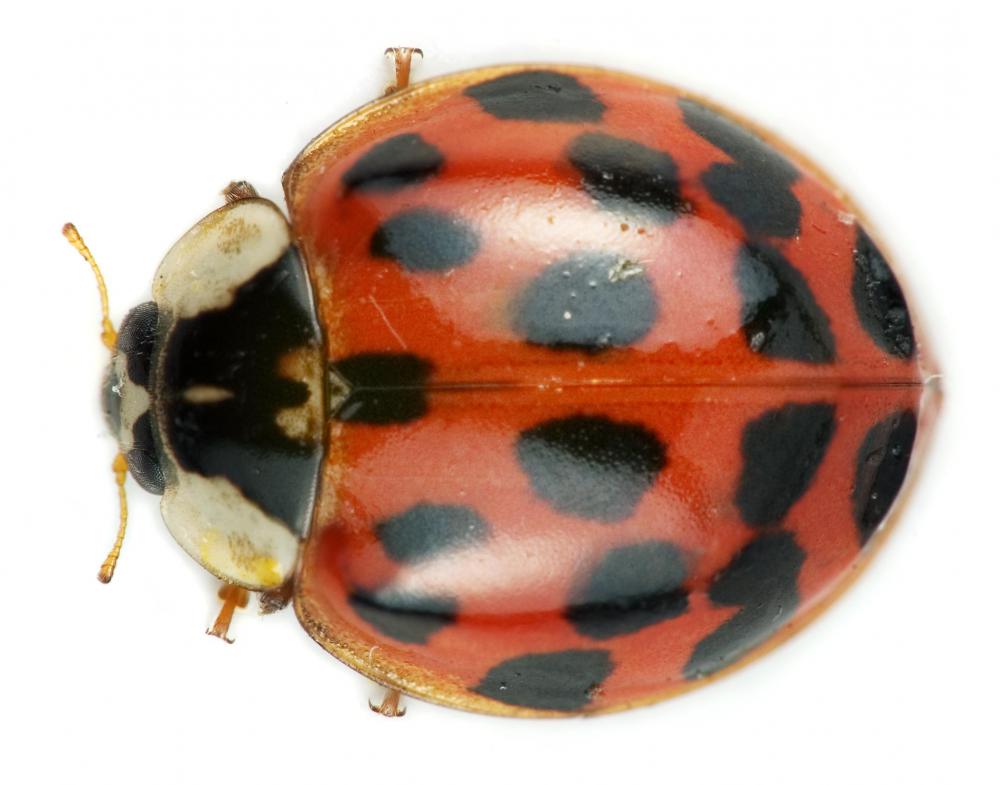At WiseGEEK, we're committed to delivering accurate, trustworthy information. Our expert-authored content is rigorously fact-checked and sourced from credible authorities. Discover how we uphold the highest standards in providing you with reliable knowledge.
How Do I Control House Plant Pests?
Controlling house plant pests involves three primary activities, proper identification of pests, appropriate treatment for current pests, as well as prevention of future or increased pest populations. Proper identification and knowledge of common house plant pests ensures the right treatments and preventative measures are used. Treatment of active pest infestations involves the plant owner’s choice of natural or chemical options, or a combination of both methods. In terms of prevention, buying only healthy house plants, practicing good personal hygiene, and regular inspection of house plants are key.
Certain types of house plant pests are common, no matter the type of plant. Other types of pests are attracted to specific plant types, soil amendments, or environmental conditions. Likewise, the presence of some pests, such as aphids, will attract predatory pests like ants, causing further damage or nuisances. Understanding what types of pests are common to your plants and what factors attract them are crucial to controlling house plant pests.

Common house plant pests include ants, aphids, gnats, mealybugs, millipedes, mites, scales, slugs, and whiteflies, to name a few. Aphids feed on sap, and like scales or mealybugs, produce a substance known as honeydew. The presence of honeydew on plant leaves, recognizable by the unnatural shiny appearance of the leaves, attracts predatory pests like ants and wasps. While ants can build underground colonies that damage plant roots, predatory wasps are considered a beneficial insect, since wasps do not contribute to plant damage.

Attracting beneficial insects is one natural method of treating an infestation of house plant pests. Other options for natural control of pests include proper pruning of affected leaves and stems, handpicking large pests, washing, and hot water dipping. Natural or homemade insecticide sprays, such as soapy water, mineral oil, or alcohol may be effective for some types of pests. Chemical insecticides, including those containing pyrethrins, natural substances derived from daisies, are also effective. Petroleum distillates and other man-made chemical compounds are exceptionally effective on a broad range of pests, but may damage tender rootlets and sensitive plants.

When used in conjunction with knowledge and various treatment options, preventative measures can drastically reduce the occurrence of house plant pests. Methods include disposing of heavily infested plants, maintaining proper soil moisture, and regularly inspecting house plants. Soil that is too moist, for example, will attract mealybugs, as well as harmful bacteria. Careful inspection of stems and leaves, including the underside of the leaves, will often result in finding visible pests or observing signs of small pests. Washing plants and keeping your hands clean when moving from one plant to the next will also prevent many pests and diseases before they have the opportunity to cause damage.
AS FEATURED ON:
AS FEATURED ON:













Discuss this Article
Post your comments